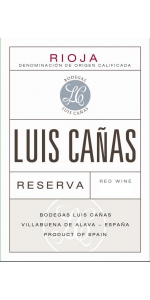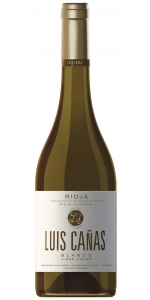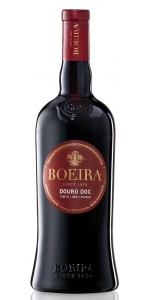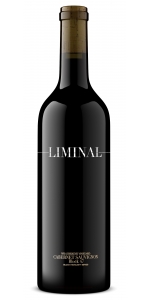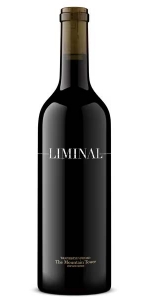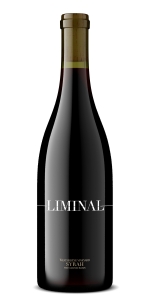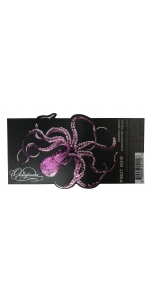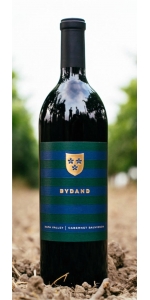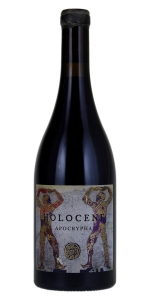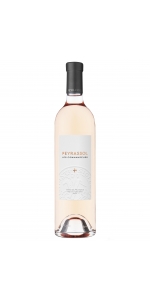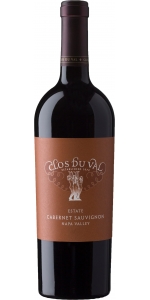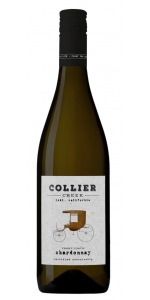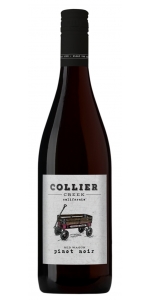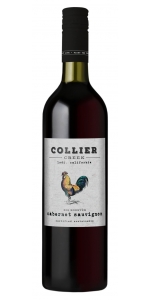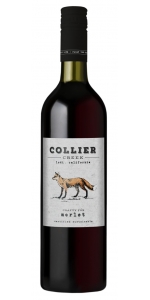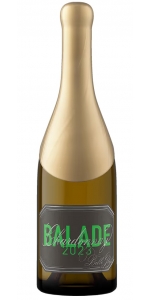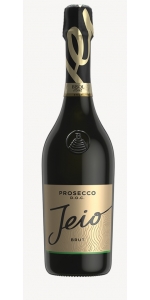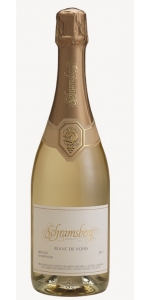New Products
Luis Canas Rioja Reserva is made from 100 percent 95% Tempranillo and 5% Graciano
A classic style Rioja Reserva from one of the regions most enduring family run wineries. The hillside terraced vineyards are sheltered by the Sierra Cantabria Mountains to the north from harsh weather extremes. Small plot production is utilized in this region of infertile chalky clay soil to produce clusters of excellent quality. Almost 900 plots are needed to complete the approximately 400 hectares of estate-owned or cellar-controlled vineyards, some with vines more than 100 years in age.
Tasting notes
Rich color. Very pleasant on the nose, subtle and elegant, complex, with aromas of fine wood, ripe fruit, coffee. Thick, unctuous and round on the palate with solid structure and juicy tannins. The second nose shows spiced nuances and black ripe fruit aromas.
Winemaking and aging
Upon entering the bodega, bunches undergo a manual selection and then individual grapes are sorted based on their weight. Following this double selection process, they are de-stemmed and crushed before undergoing fermentation and then aceration in stainless steel tanks for a total of 8 days, obtaining better color extraction as well as much more complex and tannic wines, suitable for prolonged aging.
After its primary fermentation, the wine is placed in barrels where it undergoes malolactic fermentation and is aged for 18 months in French (70%) and American (30%) oak barrels, then aged minimum 18 months in bottle before release.
Total acidity: 5 g./l. Volatile acidity: 0,6 g./l. PH: 3,59 Free SO2: 25 mg./l. Residual sugar: 1,9 g./l.
Excellent with red or white meats, all types of game, roasts, oily fish, rice with meat and cheese. Within Rioja cuisine it is perfection accompanying peppers stuffed with cod, artichokes with ham, migas pastoriles and trotters
Review:
Elegant and driven, pairing muscularity with drive and nuance. Fresh pink citrus, pomegranate and cranberry dominate the palate, with energy and detail. The tannins are at once savoury and zesty and the wine lingers forever with detailed notes of oregano, thyme, tarragon and curry leaf.
-Decanter 95 Points
Luis Canas Rioja Blanco is made from 90% Viura and 10% Malvasia (60+ years old vines)
Barrel fermented for 3.5 months in new French oak barrels.
Alcohol: 13,5º
Total acidity: 6,5 g./l.
Volatile acidity: 0,25 g./l.
PH: 3,40
Free SO2: 25 mg./l.
Grapes harvested in small boxes to be selected manually on the table, bunch by bunch.
Beautiful golden yellow, with bright lemony highly-luminous reflections. The nose is fine, with great elegance, combined with floral and fruity tones.
The palate is dry with a crisp acidity that gives its freshness and vivacity, a structured and tasty finish of ripe fruit.
We recommend that you taste it at 8°C.
It is appropriate to accompany shellfish, crustaceans and grilled white fish or fish stews. It also blends elegantly with rice, soft cheeses, blue cheeses, all kinds of mushrooms and fresh fruit.
Review:
Wonderful punchy lemon and jasmine aromatics are softened by subtle almond and flinty mineral characters that seep into the buttery texture and stirring saline length.
-Decanter 96 Points
Boeira Douro Red is made from 35% Touriga Nacional, 35% Tinta Roriz and 30% Touriga Franca.
Deep ruby color with purple hints. Aromas of red and black fruits, toasty notes and dark chocolate. Smooth on the palate with good structure and excellent mouthfeel. Fresh, with well integrated tannins bringing elegance and a gastronomic profile to the wine. Very well balanced. Boeira Douro DOC Red from the Douro Valley is the result of a careful blend of different varieties from the Douro. After fermentation the wine was left in contact with its lees until bottling in order to develop complexity and richness.
Pair with pork roast stuffed with prunes and apricots, grilled meats, marinated leg of lamb, chicken curry, pasta with beef or pork ragout, vegetable timbale with roasted tomatoes and grilled almonds. A very “friendly” food wine.
Winemaking
100% single block Cabernet Sauvignon. Aged 20 months in 100% new French oak.
Place
This beautiful block sits on the lower section of the Red Mountain side of the vineyard. Featuring a perfect southwest aspect, it gets the maximum sun exposure for depth and concentration. The land itself is wind-blown loess covering an alluvial floodplain, dotted with indigenous sage.
Winemaker's Notes
Explosively and exotically nuanced aromas of crème de cassis, Himalayan blackberry, black roses, dried violets, pencil shavings, crushed volcanic rock, and liquefied river minerals. While extremely dense and concentrated, this wine has a lot of grace and poise on the palate. The finish of inky deep black fruits, richly refined oak tones, and exotic floral notes, is utterly bewitching. Leave it for 5-7 years if you can or decant well before drinking. This is a 30-year wine in the making.
Liminal WeatherEye Vineyard The Mountain Tower is made from 40% Cabernet Franc, 33% Cabernet Sauvignon and 27% Merlot.
All three of these blocks lie quite close together on the steep north-facing side of WeatherEye. Here, full ripeness is reached while preserving great varietal character and lively acidity.
Elegant and evocative aromas of red and black currants, dark plum, violet, Ugandan chocolate, wild tobacco, crushed vanilla bean, and dried thyme. Suave and poised on the palate, with beautifully complex black and blue fruit compote, crushed wild roses, clean tilled dark earth, and windblown herbs. This wine, though drinking great now, is still gathering power, and will age gracefully for many years to come.
Liminal Syrah High Canyon Block is made from 97% Syrah and 3% Viognier.
WeatherEye Vineyard - steep slope of High Canyon block.
Dark ruby/purple.
Ethereal aromas of black fruits threaded with violets, aniseed, cacao nibs, bee pollen.
Bass notes of Syrah - blackberry compote, fresh ink - in sublime counterpoint with Viognier’s floral lift glide through to the long finish.
Review:
"More black and blue fruits, iron, lavender, and some background meaty notes emerge from Liminal’s 2020 Syrah WeatherEye Vineyard High Canyon, a blend of 97% Syrah and 3% Viognier that spent 16 months in used barrels. With medium to full-bodied richness, a silky, elegant mouthfeel, gorgeous tannins, and flawless balance, it’s one of the true gems in the vintage. Give bottles 2-3 years in the cellar and enjoy over the following decade or more."
- Jeb Dunnuck" 97 points
Octopoda Pinot Noir Russian River is made from 100 percent Pinot Noir.
10 months in 40% new French oak
Beautiful garnet color with aromas of bing cherry, red raspberry, baking spice and subtle vanilla notes. On the palate, flavors are of concentrated red and blue fruit, with a core of cherry and dark raspberry with purple violet floral notes. Medium bodied with balanced acidity that lifts the flavors
Bydand Cabernet Sauvignon Napa Valley is made from 100% Cabernet Sauvignon
Aged for 22 months in 80% new French oak, 20% neutral French oak
Rooted in the heart of Napa Valley’s bench-land, Bydand's small but mighty vineyard sources are family-owned estates that share their passion for Napa Cabernet Sauvignon. These hand-picked sites provide a rich diversity of aromas and texture that show off the best of their appellation. Bydand Cabernet Sauvignon delivers charismatic black fruit and earth-driven aromas in a silky smooth package. Juicy blackcurrant and wild blackberries meet graphite, subtle toast and spice on the palate. Structured but seamless, it offers grace and complexity the entire length of its confident, unhurried finish.
Holocene Apocrypha Pinot Noir is made from 100 percent Pinot Noir.
Apocrypha Pinot Noir tends to showcase the blue and black end of the fruit spectrum, along with a brambly, floral, dried sage and thyme profile, higher acid than the Memorialis and more power.
We tend to enjoy this wine with lamb merguez sausage and saffron rice.
Review:
The outstanding 2023 ‘Apocrypha’ was aged for 9 months in 25% new French oak and saw100% whole cluster fermentation. This is lush, round and rich on the mouth with serious texture, tannin and mouthfeel. Dense red and dark fruits collide with salty minerals and volcanic stony accents on the palate. A stunning wine that is already drinking well, enjoy over the next fifteen plus years to come.
Owen Bargreen 94 Points
The Joel Gott 2022 Cabernet Sauvignon Sonoma is a well-rounded, balanced red wine from California's Sonoma County, rich dark fruit (black cherry, blackberry) with notes of cocoa, cedar, and dried herbs, featuring fine tannins and an elegant finish, with a great price point. Expect aromas of black cherry, blackberry, cocoa, cedar, and sweet tobacco; palate with dark fruit, well-structured tannins, and hints of dried herbs.
Its rosy appearance is delicate in color and an expressive nose lends charm to this blend. A palate dominated by wild berries: gooseberry and raspberry that reveal themselves in a crisp, silky mouthfeel enhanced with a touch of minerality.
Clos du Val Estate Cabernet Sauvignon is made from 76% Cabernet Sauvignon, 7% Merlot, 5% Malbec and 1% each Cabernet Franc and Petit Verdot.
This fresh and vibrant Napa Valley Cabernet Sauvignon is brimming with aromas of blackberry, mulberry, cassis, and violet. On the palate, bright flavors of cranberry, red plum, cherry, and lavender are intertwined with supple tannins, balanced acidity, and a long, smooth finish.
Review:
"Sleek tannins, guided by sweet earth, slate, purple plum and black olive. Savory notes of fig, toasted cedar, and black tea meld with blackberries. Well structured and impeccably balanced."
-Tasting Panel 96 Points
Collier Creek Front Coach Chardonnay is made from 100 percent Chardonnay.
Nestled in the heart of the Lodi Appellation, where farmland ran as far as the eye could see, Collier Creek is a place that reminds us of simpler times. A first class wine for the price of coach, this stainless steel fermented Chardonnay is driven by notes of pear and citrus, rolling out with a dry, refreshing finish.
RS: 3.75 g/L
TA: 6.2 g/L
Pair with grilled chicken, goat cheese, fish tacos w/ citrus slaw.
Collier Creek Old Press Zinfandel is made from 93% Zinfandel and 7% Petite Sirah.
Nestled in the heart of the Lodi Appellation, where farmland ran as far as the eye could see, Collier Creek is a place that reminds us of simpler times. The ol' press may look different these days, but this Zinfandel is still a classic with notes of dark fruit, baking spice, vanilla and a velvet mouthfeel.
Pair with blue cheese, bbq pork ribs, leg of lamb.
Collier Creek Spring Willow Sauvignon Blanc is made from Sauvignon Blanc.
Nestled in the heart of the Lodi Appellation, where farmland ran as far as the eye could see, Collier Creek is a place that reminds us of simpler times. Spring Willow Sauvignon Blanc is a delicious example of how well balanced Sauvignon Blanc from Lodi can be. The wine has citrus and lemongrass aromas, with a light and crisp mouthfeel and a refreshing finish.
Pair with scallop ceviche, pesto pasta and goat cheese.
Collier Creek Crafty Fox Merlot is made from 93% Merlot and 7% Teroldego.
Nestled in the heart of the Lodi Appellation, where farmland ran as far as the eye could see, Collier Creek is a place that reminds us of simpler times. Make like a Crafty Fox and fill your den with Merlot that digs into notes of dark fruit and vanilla with a velvet mouthfeel and dry finish.
RS: 3 g/L
TA: 5.5 g/L
Pair with grilled tri-tip, veal scallopini, burger w/ gorgonzola & caramelized onions, classic baked lasagna.
Collier Creek Big Rooster Cabernet Sauvignon is made from 90% Cabernet Sauvignon and 10% Teroldego.
Nestled in the heart of the Lodi Appellation, where farmland ran as far as the eye could see, Collier Creek is a place that reminds us of simpler times. With notes of dark fruit, vanilla and full bodied, we're cocky about how good this Cabernet is. The Big Rooster lands in dry and fruit forward on the finish.
RS: 4.3 g/L
TA: 6.8 g/L
Pair with red meat and stews, or hard cheeses like cheddar.
Collier Creek Red Wagon Pinot Noir is made from 100 percent Pinot Noir.
Nestled in the heart of the Lodi Appellation, where farmland ran as far as the eye could see, Collier Creek is a place that reminds us of simpler times. Loaded with notes of red fruit and vanilla, this Red Wagon Pinot Noir pulls in dry with a medium body and velvet mouthfeel.
RS: 6 g/L
TA: 5.3 g/L
Pair with mushroom risotto, pork loin, pizza with caramelized leeks & bacon.
The word "Balade" is French for wandering. This is a fitting term for our annual exploration of single-vineyard Pinot Noir & Chardonnay blocks on the west coast. Each vintage, we will bottle only the most compelling and nuanced expression of pinot noir from a single selected vineyard and release it as a limited bottling.
Tasting Notes
Beautiful golden hue with enticing aromas of honeyed almond, vanilla custard, ripe pear, and hints of lemon zest. On the palate, lush notes of apricot, crisp green apple, and a touch of toasted hazelnut come forward. This wine has a well-balanced mouthfeel that dances on the palate with bright, lively acidity and subtle minerality, offering a stunning
expression of a coastal driven Chardonnay.
The Jeio line is inspired by the influential Desiderio Bisol, whose wife lovingly referred to him as Jeio. The father of the current generation of Bisol, Desiderio was dedicated to product quality, acquiring only the steepest plots. While considerably more difficult to work, these plots are ideal for vine cultivation. As a result of his vision, the Glera cultivated in these vineyards is especially rich in malic acid, making the final wine more dynamic and evolved. Glera sourced for the Prosecco Brut comes from vineyards in the DOC area just outside Valdobbiadene, taking advantage of the altitude and unique character.
Review:
A fresh and lively Prosecco with lots of lemon and lime character, as well as spiced pears. Medium body, lovely fruit and a fresh finish. Bottled in 2018. Drink now.
-James Suckling 91 Points
Blanc de Noirs (white from black) is the counterpart to Blanc de Blancs (white from white). Made primarily from the red grape Pinot Noir, this is a complex, medium-bodied, brut sparkling wine that is aged on the yeast lees in the bottle for two to three years prior to disgorgement.
Reviews:
"Lively and refined but festive, with pretty accents of strawberry, lemon, apple and graham cracker that sail on the crisp yet supple finish."
— Wine Spectator 93 Points
- back
Betz Family Cabernet Sauvignon Pere de Famille is 88% Cabernet Sauvignon, 10% Petit Verdot and 2% Merlot
Review:
"This is a wine for the ages. Aromas of thyme, the blackest of cherries, licorice, bay leaf and spice are followed by outright delicious, plump fruit flavors. There's a whole lot of primary fruit, with ample structure to hang it all on, along with plenty of depth and intensity. The finish is near endless. It flat-out impresses, with remarkable intensity. Best from 2028 to 2038. - SEAN P. SULLIVAN."
- Wine Enthusiast (September 2021), 95 pts
"A firm, polished red with aromas of blackberry, iodine, tobacco leaf, cocoa and cedar. It’s medium-to full-bodied with firm, chewy tannins. Structured, layered and focused. Lots going on, with a long finish. Try from 2023."
- James Suckling (May 2021), 95 pts
"Incorporating 10% Petit Verdot and 2% Merlot from a mix of sites in the Columbia Valley, the 2018 Cabernet Sauvignon Père De Famille reveals a healthy ruby/purple hue to go with beautiful cassis fruits interwoven with notions of dried rose petals, violets, cedary spice, and chalky minerality. Medium to full-bodied, reasonably well concentrated, yet elegant and beautifully balanced, it opens up nicely with time in the glass and will benefit from 2-4 years of bottle age and keep for 20 years."
- Jeb Dunnuck (May 2021), 95 pts
From the most recognized Napa Valley red blend comes a distinct, new wine. Made in the same iconic style as The Prisoner Red Blend, we proudly introduce The Prisoner Cabernet Sauvignon. Redefining taste once again.
On the nose, blackberry, currant, and plum are layered with dried, crushed herbs and licorice. On the palate, cedar, vanilla, nutmeg, and toasted coconut lead as plum and dried blackberries culminate in a lush, full mouthfeel and a lengthy, balanced finish.
Chef Brett recommends pairing The Prisoner Cabernet with Grilled Ribeye or Aged Gouda Cheese.

